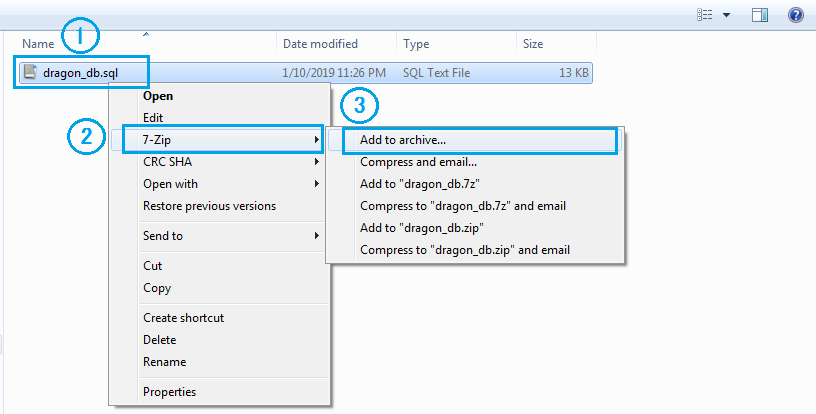
 Download WinRAR (It is free for the 32-bit version). So, if WinZip is not a go for you, try WinRAR because it also works with Unicode. It is compatible with many operating systems and comes in more than 50 languages. WinRAR has more than 500 million people using the tool to organize and password-protect their files. It allows you to encrypt your files, backup files, and package them to share with others. Just like WinZip, this tool is straightforward to use and efficient too. This is another file-compressing solution for Windows 10 users. Thanks to the Encrypt function you enabled earlier, the Set your Password windows will show automatically. Choose a file to password-protect and drag-and-drop into the NewZip.zip center. Click “ This PC“ and then double-click on Desktop (or any other location where your desired file is). Click on Files at the top left and select the location of the file you want to add. The bar beside the encrypt function will change to Green once you activate it. Activate the “ Encrypt” option in the Action menu at the right corner. Follow the prompts and install it onto your Windows 10. Download WinZip (It is free to download. So, if you’ve confused about the solution to use, try WinZip and be part of the billions of people who’re using it. This compression software is a one-stop manager for the security of your files on Windows 10. You can use it to zip your files, protect them with world-class banking-level encryption, manage and share with others. Many people love using WinZip because it offers lots of functionalities it is also efficient and easy to use. This is one of the most popular tools you can use to zip and protect your files on Windows 10. Note: There are many encryption tools in the market, but in this article, we’re going to use the top three. You’ll find the step-by-step guide on how to password-protect your zip files on Windows 10 using the best tools. So, if you’ve been worried about that, keep reading this article. However, you’ll need third-party solutions to password-protect zip files because you can’t do it by default on Windows 10. If you have Windows 10 on your computer, you can easily set passwords for your files and folders with built-in features. So, it is a no-brainer that you protect your work, projects, personal details, and other private information from prying eyes. But if you’re working in an office environment, there’s a high possibility that someone will use your computer. Many times, you may save important details on your computer without thinking that anyone can access them.
Download WinRAR (It is free for the 32-bit version). So, if WinZip is not a go for you, try WinRAR because it also works with Unicode. It is compatible with many operating systems and comes in more than 50 languages. WinRAR has more than 500 million people using the tool to organize and password-protect their files. It allows you to encrypt your files, backup files, and package them to share with others. Just like WinZip, this tool is straightforward to use and efficient too. This is another file-compressing solution for Windows 10 users. Thanks to the Encrypt function you enabled earlier, the Set your Password windows will show automatically. Choose a file to password-protect and drag-and-drop into the NewZip.zip center. Click “ This PC“ and then double-click on Desktop (or any other location where your desired file is). Click on Files at the top left and select the location of the file you want to add. The bar beside the encrypt function will change to Green once you activate it. Activate the “ Encrypt” option in the Action menu at the right corner. Follow the prompts and install it onto your Windows 10. Download WinZip (It is free to download. So, if you’ve confused about the solution to use, try WinZip and be part of the billions of people who’re using it. This compression software is a one-stop manager for the security of your files on Windows 10. You can use it to zip your files, protect them with world-class banking-level encryption, manage and share with others. Many people love using WinZip because it offers lots of functionalities it is also efficient and easy to use. This is one of the most popular tools you can use to zip and protect your files on Windows 10. Note: There are many encryption tools in the market, but in this article, we’re going to use the top three. You’ll find the step-by-step guide on how to password-protect your zip files on Windows 10 using the best tools. So, if you’ve been worried about that, keep reading this article. However, you’ll need third-party solutions to password-protect zip files because you can’t do it by default on Windows 10. If you have Windows 10 on your computer, you can easily set passwords for your files and folders with built-in features. So, it is a no-brainer that you protect your work, projects, personal details, and other private information from prying eyes. But if you’re working in an office environment, there’s a high possibility that someone will use your computer. Many times, you may save important details on your computer without thinking that anyone can access them. 
If you’ve not been setting passwords for your files, folders, and zip files, you’re unknowingly compromising your privacy. The best way to keep your files private is to lock them with strong passwords that no one can break.








